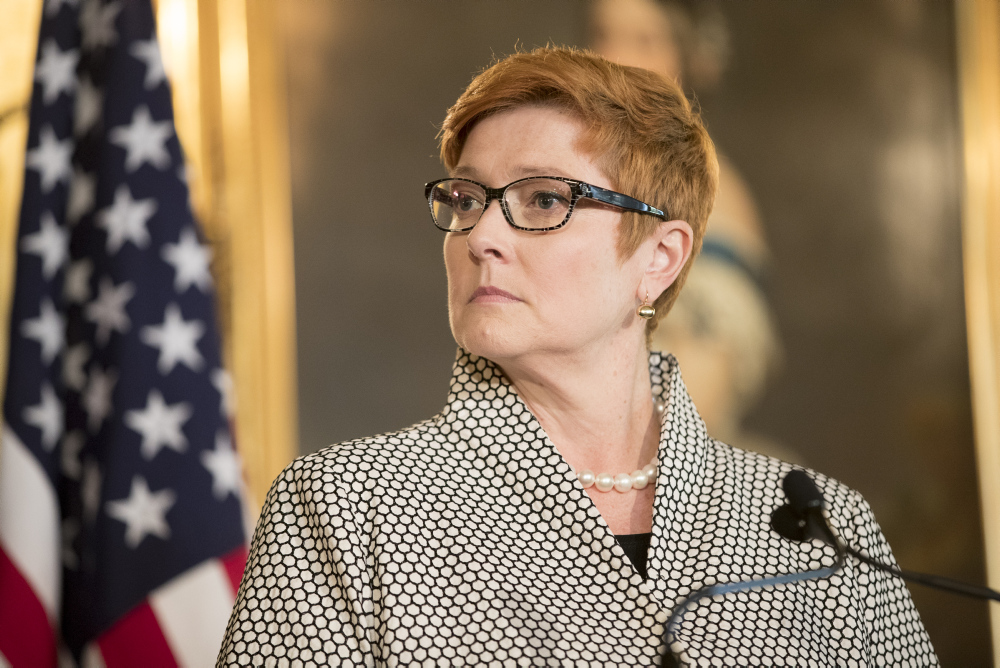
The Australian Defence organisation has an undeserved reputation for supposedly ‘devouring’ its ministers. The generally high throughput has instead had far more to do with the portfolio being frequently allocated to those already in the twilight of their ministerial and/or parliamentary careers, lost elections and ‘quickie’ reshuffles based on factional politics after divisive prime ministerial transitions.
Moreover, portfolio governance difficulties have also long been exacerbated by three structural inefficiencies: appointment of an insufficient number of ministers, junior ministers being double-hatted with time-consuming responsibilities in other portfolios, and constant unnecessary changes in the structure and titling of Defence’s ministerial governance.
Julia Gillard reshuffled the Defence portfolio three times, each time worsening its governance and wider business continuity. Most tragically, she destroyed the innovative and successfully tested team-management structure instituted by John Faulkner (under Rudd), whereby the portfolio had a senior minister, two junior ministers (one full-time) and two full-time parliamentary secretaries to spread and co-ordinate the governance load effectively.
Such a structure also enables more focused ministerial career development for the challenges of a complex portfolio. British practice, and the careers of Kim Beazley, Brendan Nelson and John Faulkner, clearly shows experience in junior roles in the Defence portfolio better prepares incumbents for success when Minister for Defence.
When Malcolm Turnbull undertook his first ministerial reshuffle, public discussion of the Defence portfolio focused on peripheral issues. These included our first female Minister for Defence, the appointment of a second cabinet minister to the portfolio, how such a relationship would work at the personal level (when the real problem is co-ordinating their offices and not doubling up the work of the department), and the blatant political expediency of aligning the defence industry ministership with electorally volatile South Australia.
Then and since, most commentators have missed the longer term context and substantive issues involved. Furthermore, the portfolio also narrowly avoided yet another twilight-career, sideways-shift, short-termer episode only because Joe Hockey rejected being warehoused to Defence in favour of a senior ambassadorship.
In nearly every recent reshuffle—in both the numbers provided and the structure of ministerial governance—ministers have been allocated to the Defence portfolio because political and factional priorities have wrongly won out over the need for appropriate portfolio governance.
Defence is a major portfolio in responsibility, span, complexity and financial terms, but its governance has suffered over recent decades as the number of ministers has varied between one-and-a-half and three. It’s currently two-and-one-third at best, and it shows.
This compares illogically with the full-time ministerial attention allotted to comparable major governmental responsibilities, such as PM&C (5), DFAT (4), Treasury and Finance (4) and Health and Ageing (3). Moreover, Turnbull’s 2015 reshuffle unwisely removed Defence’s last parliamentary secretary (now assistant minister) position.
These governance duties cascaded on to the remaining part-time junior minister, Dan Tehan, chiefly because the other two ministers hold cabinet rank. The assistant minister in Defence has traditionally had one of the largest financial delegations among all junior and assistant ministers. The job includes onerous and time-consuming responsibilities for matters such as Defence’s landholdings (the largest in Australia), the ADF’s complex reserve elements, community cadet schemes and honours and awards.
Tehan is already one of the busiest ministers in the government, covering four ministerships (Cyber Security, Defence Personnel, Veterans’ Affairs and the Centenary of Anzac) spread over the PM&C, Defence and DVA portfolios, with the first three each involving complex matters and busy ministerial calendars.
This now habitual double-hatting of the particularly time-consuming Veterans’ Affairs portfolio with Defence personnel responsibilities is mainly done to pretend that Defence has more ministers (and government focus) than it actually does. The vaunted co-ordination advantages don’t seem much evident after an on-and-off-again decade of experimentation, and the cost in lost Defence governance has been particularly high. Not to mention helping entrench a loss of confidence across the veterans community.
As the successful collegiate model instituted by Faulkner showed, Defence needs a senior portfolio minister handling all the big-picture stuff, a full-time minister for defence science, technology and industry/procurement (whether in cabinet or not), and a full-time junior minister for the defence force (not just personnel matters). A full-time assistant minister for the minor but busy supporting stuff should also be restored.
As the successful UK ministerial model shows, a holistic Minister for the Defence Force enables both the day-to-day operational and capability development matters – and their personnel consequences -to be ministered as the two complementary sides of the ADF effectiveness coin that they are, thus freeing the senior minister to focus on bigger-picture tasks.
Little tweaks to the machinery of portfolio governance would also help.
As with the Attorney-General and the Minister for Justice, co-locating all Defence ministers in the same corridor at Parliament House would greatly assist staff teamwork, collegial culture, timely decision-making and external business relationships. The cost of rewiring the secure IT systems would soon pay for itself in greater efficiency and harmony.
Not arbitrarily changing ministerial titles or rank structures (parliamentary secretary versus assistant minister) on a whim would assist business continuity over decades. Consistent responsibilities and their titling would particularly preclude the embarrassing long delays, and now endemic functional omissions in ministerial appointment letters, that hamper the Defence Department and its many national and international interlocutors with every ministerial reshuffle.

